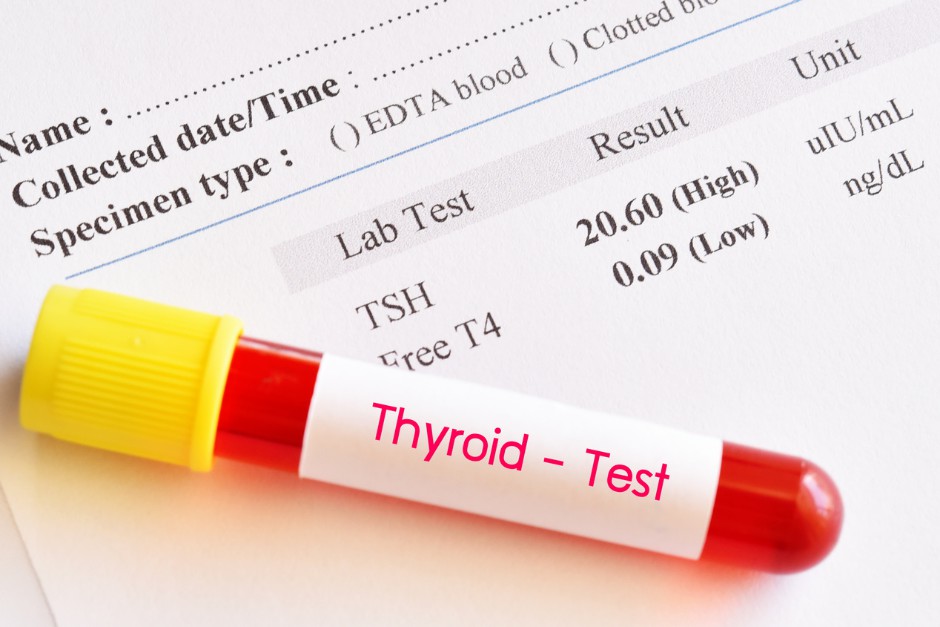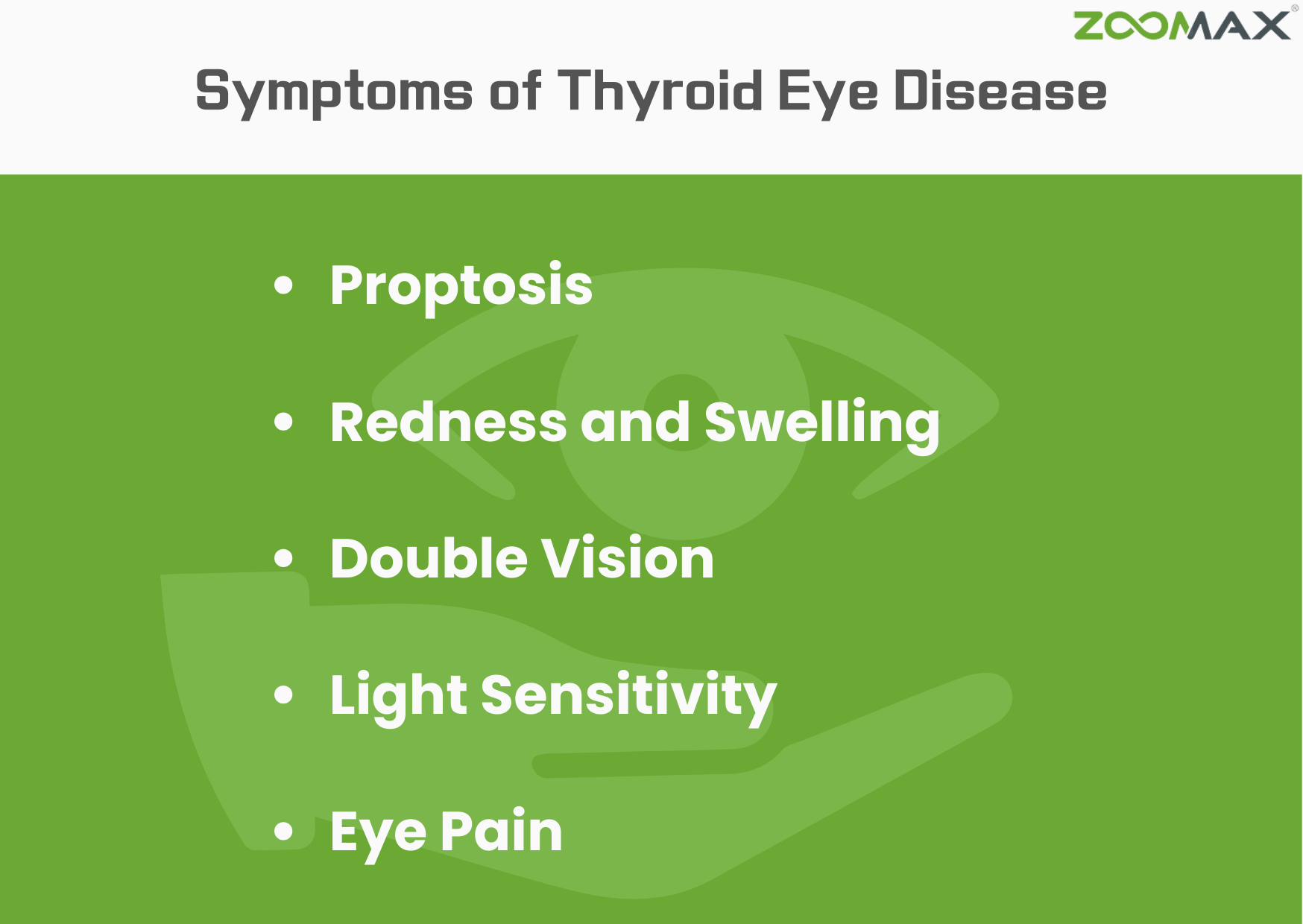Imagine a world where your vision dramatically changes before your eyes, where the faces and places you once knew become hazy and unrecognizable. For those affected by Thyroid Eye Disease (TED), this isn't just a thought experiment; it's their daily reality. TED, also known as Graves' disease, is a complex condition that can significantly affect one's eyesight. In this comprehensive article, we will delve into the intricacies of Thyroid Eye Disease, exploring its definition, causes, and the profound impact it has on vision. We will also discuss its diagnosis, symptoms, and whether it can lead to 20/200 vision. Furthermore, we'll touch upon the role of low vision aids, including digital magnifiers, in assisting visually impaired individuals.
What Is Thyroid Eye Disease?
 Thyroid Eye Disease, commonly referred to as TED or Graves' disease, is a condition characterized by the inflammation of the eye muscles and the tissues surrounding the eyes. It is primarily associated with an overactive thyroid gland, leading to a variety of vision loss symptoms. Understanding the causes of this disease is essential for its management and treatment.
Thyroid Eye Disease, commonly referred to as TED or Graves' disease, is a condition characterized by the inflammation of the eye muscles and the tissues surrounding the eyes. It is primarily associated with an overactive thyroid gland, leading to a variety of vision loss symptoms. Understanding the causes of this disease is essential for its management and treatment.
Thyroid Eye Disease is a condition that is closely associated with Graves' disease, an autoimmune disorder that majorly affects the thyroid gland. Graves' disease leads to the production of excessive thyroid hormones, which, in turn, can result in the development of TED.
Causes of Thyroid Eye Disease
The exact causes of TED are diverse and can be traced to a number of interconnected factors:
Autoimmune Response: TED is an autoimmune disorder, which occurs when the body's immune system mistakenly targets its own tissues. In Graves' disease and TED, the immune system attacks the thyroid gland, resulting in excessive thyroid hormone production. This immunological reaction is crucial in the development of TED.
Genetic Predisposition: Genetic factors are thought to contribute to Graves' disease and, subsequently, TED susceptibility. Individuals with a family history of autoimmune illnesses, such as Graves' disease, may be predisposed to getting TED.
Thyroid Hormone Levels: Graves' disease is characterized by an excess of thyroid hormones, primarily thyroxine (T4) and triiodothyronine (T3). Elevated amounts of these hormones can cause a variety of immunological responses and inflammation, potentially leading to TED.
Smoking: Smoking is a well-known risk factor for the development and progression of TED. The precise processes by which smoking effects the illness are unknown, although it is known to aggravate symptoms and worsen the severity of TED. Smoking cessation is especially crucial for people with Graves' disease or a family history of the condition, as it lowers the chance of getting TED.

It's important to understand that TED can appear in people with Graves' disease, and sometimes even before thyroid failure is visible. This emphasizes the complex link between the thyroid, the immune system, and the onset of TED.
Understanding the origins of TED is critical for diagnosis, management, and treatment. Early management can help moderate the autoimmune response and minimize the severity of TED symptoms, highlighting the significance of comprehensive treatment for people living with this complicated disorder.
What Are the Symptoms of Thyroid Eye Disease?
 Diagnosing Thyroid Eye Disease can be a complex process as its symptoms can vary in severity and presentation. This condition leads to a distinctive set of ocular symptoms, including proptosis (bulging eyes), redness, double vision, light sensitivity, and eye pain. But can Thyroid Eye Disease lead to 20/200 vision?
Diagnosing Thyroid Eye Disease can be a complex process as its symptoms can vary in severity and presentation. This condition leads to a distinctive set of ocular symptoms, including proptosis (bulging eyes), redness, double vision, light sensitivity, and eye pain. But can Thyroid Eye Disease lead to 20/200 vision?
Thyroid Eye Disease can be difficult to diagnose due to the condition's various and frequently complicated symptoms. TED may cause a variety of ocular problems, including:
Proptosis: The most noticeable sign is the bulging of the eyes, which is properly known as proptosis. This might result in a wider, gazing expression.
Redness and Swelling: Swollen and red eyelids are frequently connected with discomfort or pain.
Double Vision: Misalignment of the eye muscles can cause double vision, also known as diplopia, which can have a substantial impact on everyday living.
Light Sensitivity: Photophobia, or increased sensitivity to light, is a typical symptom of TED. Bright lights can be uncomfortable and worsen other symptoms.
Eye Pain: TED can produce pain in and around the eyes, which can vary from minor discomfort to severe agony.

Can thyroid eye disease lead to 20/200 vision?
TED can have a major impact on vision, owing to the considerable proptosis and eye muscle dysfunction it frequently produces. However, it seldom results in 20/200 vision. 20/200 vision is typically connected with legal blindness in the context of vision acuity. It means that a person with normal vision can see at 20 feet what someone with normal vision can see at 200 feet. TED can produce significant vision loss issues, however, it seldom causes this kind of visual impairment.
How to Treat Thyroid Eye Disease?
TED is diagnosed using a combination of clinical examination, medical history, and imaging tests. While there is no cure for the condition, there are some treatments available to help control its symptoms. These treatments may include surgery, medication, and lifestyle changes.
 A complete assessment is often used to diagnose TED, which may include a medical history review, clinical examination, and imaging tests such as CT scans or MRI scans. Early detection is critical for controlling the illness and preventing the development of more severe symptoms.
A complete assessment is often used to diagnose TED, which may include a medical history review, clinical examination, and imaging tests such as CT scans or MRI scans. Early detection is critical for controlling the illness and preventing the development of more severe symptoms.
The primary goal of TED treatment is to manage symptoms and minimize discomfort. Depending on the severity of the illness, several techniques can be used. These might include:
Medication: To lessen inflammation and ease symptoms, doctors may give corticosteroids or other immunosuppressive medications.
Surgery: If TED considerably impairs vision or causes serious eye abnormalities, surgical procedures such as decompression surgery, eye muscle surgery or eyelid surgery may be required.
Lifestyle modifications: Individuals with TED should make lifestyle modifications such as wearing sunglasses, utilizing artificial tears, and quitting smoking.
As it’s introduced above, people with thyroid eye disease often face the challenge of impaired vision, as protruding eyes and dry corneas can lead to dry eye syndrome, making vision more difficult. Additionally, double vision problems are common because the position and movement of the eyeballs are affected. Swelling and redness of the eyelids not only affect the appearance but may also cause discomfort.
 In this case, low vision aids like electronic video magnifiers can provide substantial assistance. They can improve residual vision by magnifying and enhancing contrast, helping patients read and see details more easily. In addition, they can help individuals better cope with double vision problems by adjusting color and brightness to reduce visual discomfort. The text recognition function of digital magnifiers can also convert books and documents into speech, allowing patients to obtain information through auditory means. In short, these kinds of devices can offer important support to people with thyroid eye disease in improving quality of life and independence in daily life.
In this case, low vision aids like electronic video magnifiers can provide substantial assistance. They can improve residual vision by magnifying and enhancing contrast, helping patients read and see details more easily. In addition, they can help individuals better cope with double vision problems by adjusting color and brightness to reduce visual discomfort. The text recognition function of digital magnifiers can also convert books and documents into speech, allowing patients to obtain information through auditory means. In short, these kinds of devices can offer important support to people with thyroid eye disease in improving quality of life and independence in daily life.
In conclusion, Thyroid Eye Disease, commonly known as Graves' disease, is a complicated ailment that can have a substantial impact on one's eyesight and cause a variety of ocular symptoms. While it seldom results in 20/200 vision, early detection and care are critical for avoiding long-term vision loss issues.
Low vision devices, such as digital magnifiers, are extremely useful for those who have visual impairment due to Thyroid Eye Disease or other diseases. These gadgets, such as Zoomax's Snow 12, Luna 6, and Luna 8, can enable vision impaired people to live full and independent lives.
References
https://my.clevelandclinic.org/health/diseases/17558-thyroid-eye-disease
https://www.niddk.nih.gov/health-information/endocrine-diseases/graves-disease
https://www.pennmedicine.org/for-patients-and-visitors/find-a-program-or-service/ophthalmology/thyroid-eye-disease-graves-disease

